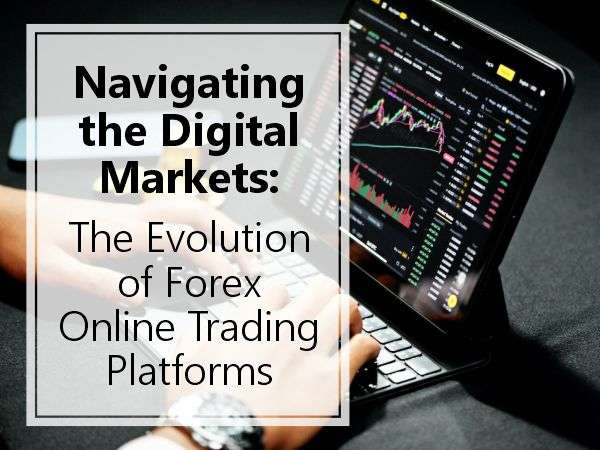The world of Forex trading has undergone a remarkable transformation with the advent of online trading platforms. From their humble beginnings to the sophisticated systems we have today, these platforms have become an integral part of the global financial landscape, empowering traders to access the forex market with unprecedented ease and efficiency.
The Early Days of Online Forex Trading
The concept of Forex online trading emerged in the late 1990s, as the internet started to reshape various industries. Initially, trading was conducted through phone calls and fax machines, creating barriers for individual traders.
The introduction of online platforms revolutionized this landscape, allowing traders to execute trades with a click of a button. Early platforms provided basic functionalities, enabling users to monitor currency pairs and execute trades, but they lacked the advanced features we see today.
The Evolution of Key Features
As technology advanced, Forex online trading platforms evolved to offer a myriad of features that catered to the diverse needs of traders. Real-time price quotes, advanced charting tools, technical analysis indicators, and risk management features became standard.
MetaTrader 4 (MT4), introduced in 2005, played a pivotal role in shaping the industry. Its user-friendly interface and powerful capabilities made it a go-to platform for many traders and brokers.
MetaTrader 4 and MetaTrader 5
MT4 and its successor, MetaTrader 5 (MT5), remain among the most popular platforms in the Forex market. These platforms provide a seamless trading experience with features like automated trading through Expert Advisors (EAs), customizable charts, and a wide range of technical indicators.
MT5, introduced in 2010, expanded on its predecessor by offering more timeframes, additional order types, and improved charting tools. Both platforms continue to be widely adopted by traders and are supported by numerous Forex brokers.
cTrader
Another noteworthy Forex online trading platform is cTrader, known for its intuitive interface and advanced trading capabilities.
Launched in 2010, cTrader gained popularity for its fast order execution, transparent pricing, and a user-friendly design. The platform offers a comprehensive charting package, algorithmic trading options, and a feature-rich mobile application, catering to the needs of both novice and experienced traders.
The Importance of Online Forex Trading Platforms
The significance of online Forex trading platforms in the modern financial landscape cannot be overstated. These platforms serve as the gateway for traders to access the global currency markets in real-time.
Through these interfaces, traders can execute trades, conduct technical analysis, and manage their portfolios with unprecedented convenience. The availability of these platforms has democratized Forex trading, enabling individuals from around the world to participate in the market.
The Rise of Proprietary Forex Trading Platforms
In addition to third-party platforms like MT4, MT5, and cTrader, many Forex brokers offer proprietary trading platforms. These custom platforms are designed to meet the specific needs of their client base, providing unique features and tools.
While these platforms may lack the universal adoption of industry giants, they often come with specialized resources, educational materials, and customer support tailored to the broker’s clientele.
Final Thoughts
The evolution of online Forex trading platforms has transformed the way traders engage with the foreign exchange market. From the basic functionalities of the early days to the sophisticated features of today’s platforms, the journey has been marked by innovation and a relentless pursuit of providing traders with powerful tools.












